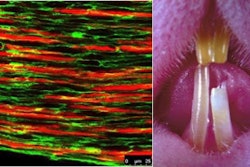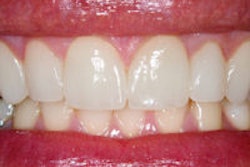Gingivae are an attractive source for stem cells can be used in tissue regeneration, according to a new study in the Journal of Dental Research (July 18, 2013).
Gingivae represent a unique soft tissue that serves as a biological barrier to cover the oral cavity side of the maxilla and mandible, noted the study authors, from the University of Southern California and the University of Pennsylvania. Recently, gingivae were identified as containing mesenchymal stem cells (GMSCs). However, it is unknown whether the GMSCs are derived from cranial neural crest cells (CNCC) or the mesoderm.
The researchers demonstrated that approximately 90% of GMSCs are derived from CNCC and 10% from the mesoderm. In comparison with mesoderm MSCs (M-GMSCs), CNCC-derived GMSCs (N-GMSCs) show an elevated capacity to differentiate into neural cells and chondrocytes, as well as to modulate immune cells. When transplanted into mice with dextran sulfate sodium-induced colitis, N-GMSCs showed superior effects in ameliorating inflammatory-related disease phenotype in comparison with the M-GMSC treatment group.
Further research is required to understand the interaction between the neural crest cell derived and mesoderm derived gingivae mesenchymal stem cells (N-GMSCs and M-GMSCs) in terms of their functional roles in gingival immune defense and wound healing, the researchers said.



















